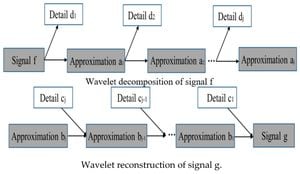New research sheds light on how we memorize novel words by examining the relationship between their features and the brain's activity, particularly in the anterior fusiform region. This study reveals significant insights on the intrinsic memorability of certain pseudowords, linking their memorability to their similarity to known words.
Understanding how we learn new words is fundamental, especially when everyday life presents us with constant encounters of unfamiliar terms. This recent work, which involved 1804 participants and analyzed 2100 unique pseudowords, identifies factors influencing the ability to recall words we have never seen before. The findings indicate notable agreement among individuals about which pseudowords are memorable, underscoring the concept of intrinsic memorability.
Notably, the research highlights the role played by the anterior fusiform cortex during the memorization of these pseudowords, indicating regions sensitive to memorability. The study stipulated how pseudowords resembling low-frequency known words or exhibiting unique letter pairings stand out as more memorable, creating new pathways for word learning based on existing linguistic frameworks.
Memorability appears to operate at different levels; the brain’s orbit around familiar terms serves as scaffolding for embedding novel words. This finding aligns fascinatingly with behavioral data showing how words with rare and distinctive features are more easily remembered.
Data collection involved participants pressed buttons when recognizing previously encountered words amid streams of pseudowords displayed on their screens. The empirical memorability scores were determined by assessing how well participants could recognize these repetitions. Strikingly, the results showed not only individual variations but also highlighted the procedural methodology behind word memorization processes.
Further examination through intracranial recordings revealed distinct patterns of brain activity tied to the memorability of pseudowords. Specific areas within the anterior fusiform region displayed variations when engaging with these pseudowords, providing compelling evidence about how memorability is processed neurologically. This insight raises intriguing questions about the neural pathways exploited during learning and recognition processes.
For example, the study found pseudowords with fewer nearby orthographic neighbors exhibited higher memorability scores. This suggests the brain may be leveraging the uniqueness of word structures to streamline the memorization of new terms. Consequently, their mappings on the brain offer insights on how word-like characteristics make certain forms stand out against the backdrop of less distinguishable pseudowords.
Perhaps most surprisingly, the study suggests different cognitive processes underpin memorizing known versus novel words. Known words engage more semantic memories, whereas novel terms rely heavily on their structural relationships to the existing lexicon. This fundamentally shifts the basis of how individuals acquire new vocabulary, aligning it more closely with the mechanics of word form than previously understood.
With approximately 1804 participants completing the task, this project utilized advanced analytics and computational modeling to depict the participants' varying recognition capabilities. It was evidenced through careful analysis of reaction times and accuracy rates which highlighted how more memorable items led to faster recognition.
The research opens several pathways for continued exploration and potential educational applications. Could prioritizing unique or distinctive features contribute to teaching methods focused on vocabulary acquisition, leveraging these findings?
Finally, as language evolves, and new terms find their way to daily discourse, the intrinsic memorability of these words may guide their incorporation. The study’s findings hint at how new lexicons, birthed from creativity or cultural shifts, can rely on established words for acceptance and recall, much like newly minted phrases entering the Merriam-Webster dictionary.
This investigation stands as not only foundational work but also calls for additional research to discern the phases of word learning, especially how memory for new words transitions from initial cognitive engagement to more sophisticated lexical processing.



